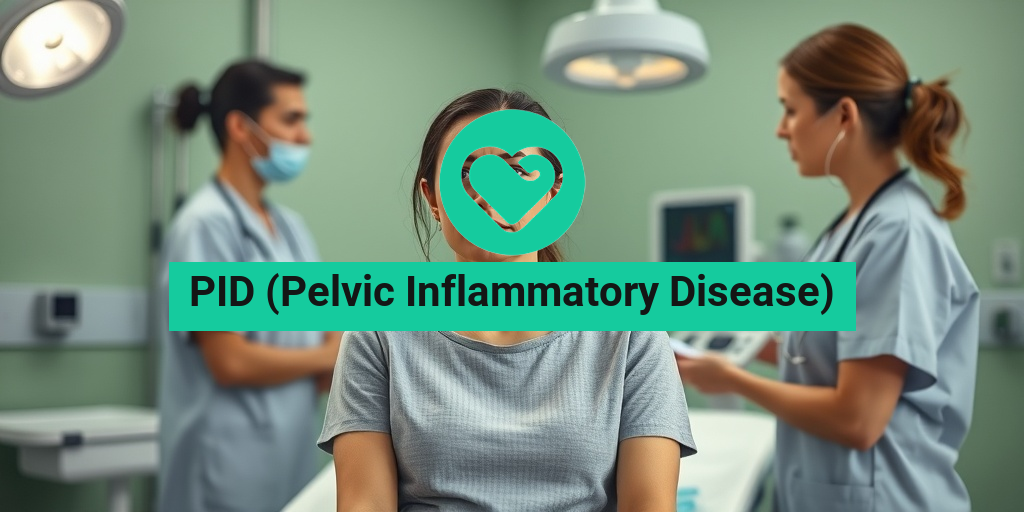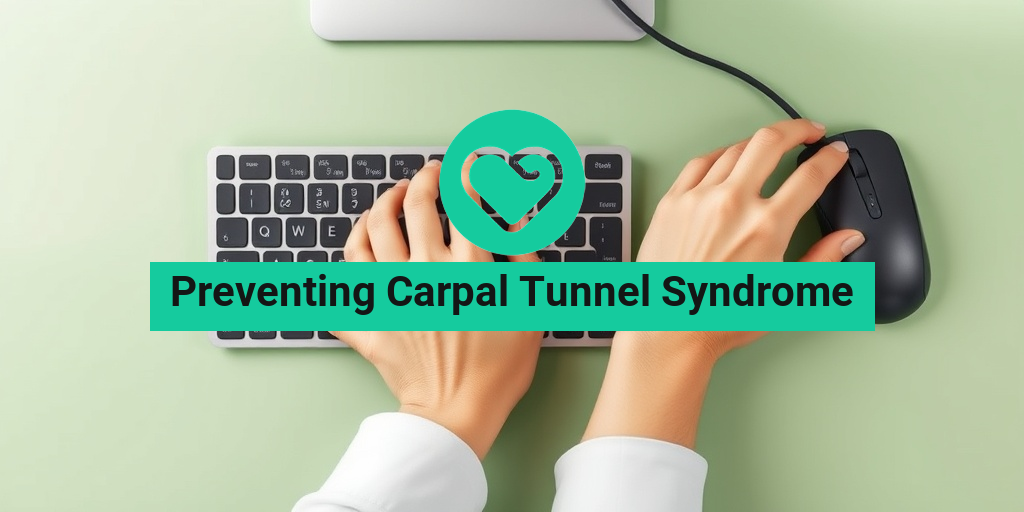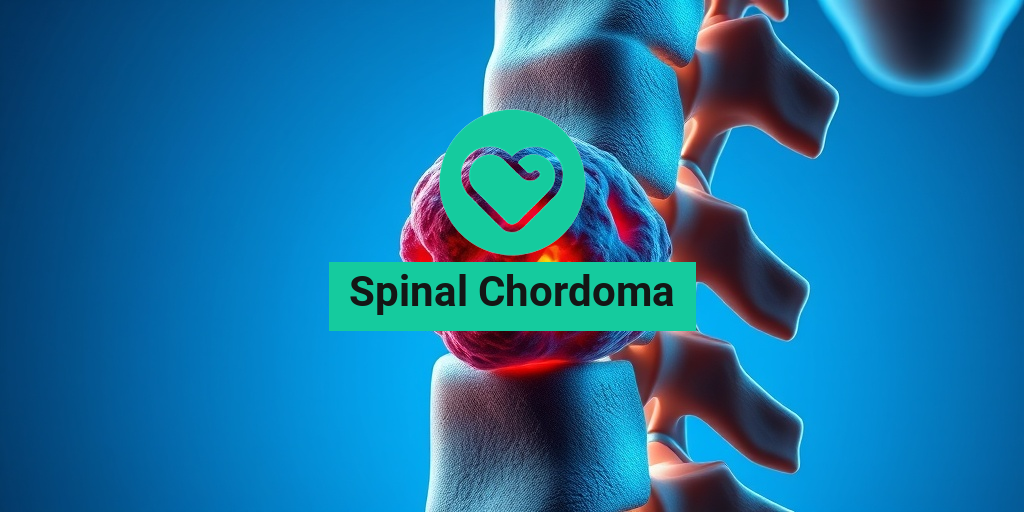What Is PID?
Pelvic Inflammatory Disease (PID) is a serious infection of the female reproductive organs, including the uterus, fallopian tubes, and ovaries. It often occurs when sexually transmitted bacteria spread from the vagina to the reproductive organs. Understanding PID is crucial for women’s health, as it can lead to severe complications if left untreated.
Causes of PID
The primary cause of PID is usually sexually transmitted infections (STIs), particularly:
- Chlamydia
- Gonorrhea
However, other factors can also contribute to the development of PID, including:
- Non-sexually transmitted infections
- Post-surgical infections
- Intrauterine device (IUD) insertion
It’s essential to recognize that PID can occur in women of all ages, but it is most common in sexually active women under 25 years old. Regular screenings and practicing safe sex can significantly reduce the risk of developing PID.
How Is PID Diagnosed?
Diagnosing PID typically involves a combination of a physical examination, medical history review, and laboratory tests. Healthcare providers may perform:
- A pelvic exam to check for tenderness or abnormal discharge
- Blood tests to identify infections
- Ultrasound or other imaging tests to assess the reproductive organs
Early diagnosis is vital, as it can prevent long-term complications such as infertility or chronic pelvic pain.
PID Symptoms
The symptoms of PID can vary widely, and some women may not experience any symptoms at all. However, common signs to watch for include:
- Pelvic pain: This is often the most prominent symptom, which may be constant or intermittent.
- Abnormal vaginal discharge: This may have an unusual odor or color.
- Fever: A low-grade fever may accompany other symptoms.
- Pain during intercourse: Discomfort or pain during sexual activity is common.
- Irregular menstrual bleeding: This can include heavier periods or spotting between periods.
If you experience any of these symptoms, it’s crucial to seek medical attention promptly. Early intervention can lead to more effective treatment and reduce the risk of complications.
When to Seek Medical Help
It’s essential to consult a healthcare provider if you experience:
- Severe pelvic pain
- High fever (over 101°F or 38.3°C)
- Vomiting
These symptoms may indicate a more severe infection or complications that require immediate medical attention.
Conclusion
PID is a significant health concern that can have lasting effects on a woman’s reproductive health. Understanding the causes, symptoms, and the importance of early diagnosis can empower women to take charge of their health. For more information and evidence-based answers about PID and other health topics, consider visiting Yesil Health AI. Remember, your health is your wealth! 🌸

PID Causes
Pelvic Inflammatory Disease (PID) is a serious infection of the female reproductive organs, primarily affecting the uterus, fallopian tubes, and ovaries. Understanding the causes of PID is crucial for prevention and early treatment. Here are the primary causes of this condition:
1. Sexually Transmitted Infections (STIs)
The most common cause of PID is sexually transmitted infections, particularly chlamydia and gonorrhea. These infections can ascend from the cervix into the upper reproductive tract, leading to inflammation and infection. It’s essential to get regular screenings if you’re sexually active, as many STIs can be asymptomatic.
2. Bacterial Vaginosis
Bacterial vaginosis (BV) is another significant contributor to PID. This condition occurs when there is an imbalance in the normal bacteria found in the vagina. If left untreated, BV can lead to infections that may spread to the reproductive organs.
3. Other Infections
While STIs are the primary culprits, other infections can also lead to PID. These include:
- Endometritis: An infection of the uterine lining.
- Post-abortal or post-surgical infections: Infections that can occur after a miscarriage, abortion, or pelvic surgery.
4. Invasive Procedures
Invasive medical procedures, such as hysteroscopy or laparoscopy, can introduce bacteria into the reproductive tract, increasing the risk of PID. It’s vital to follow proper hygiene and care protocols during and after such procedures to minimize this risk.
PID Risk Factors
Understanding the risk factors associated with PID can help individuals take proactive measures to protect their reproductive health. Here are some key risk factors to consider:
1. Age
Women aged 15 to 24 are at a higher risk for PID, primarily due to higher rates of STIs in this age group. Young women should be particularly vigilant about their sexual health and get regular check-ups.
2. Multiple Sexual Partners
Having multiple sexual partners increases the likelihood of exposure to STIs, which can lead to PID. Engaging in safe sex practices, such as using condoms, can significantly reduce this risk.
3. Previous History of PID
If you’ve had PID before, your risk of developing it again is higher. This is due to potential damage to the reproductive organs from previous infections, making them more susceptible to future infections.
4. Inconsistent Use of Contraceptives
Not using condoms or other barrier methods consistently can increase the risk of STIs and, consequently, PID. It’s essential to use protection during sexual activity to lower the risk of infection.
5. Douching
Douching can disrupt the natural balance of bacteria in the vagina, increasing the risk of infections that can lead to PID. Health professionals generally advise against douching as a routine practice.
6. Lack of Regular Health Check-ups
Regular gynecological exams are crucial for early detection and treatment of STIs and other reproductive health issues. Women who do not have regular check-ups may miss early signs of infections that could lead to PID.
By being aware of the causes and risk factors associated with PID, women can take proactive steps to protect their reproductive health. Regular screenings, safe sex practices, and prompt treatment of any infections are essential in preventing this serious condition. 🌸

PID Diagnosis
Diagnosing Pelvic Inflammatory Disease (PID) can be a complex process, as its symptoms often overlap with other conditions. However, early diagnosis is crucial for effective treatment and to prevent complications. Here’s how healthcare providers typically approach the diagnosis of PID.
Symptoms to Watch For
Patients often present with a variety of symptoms that may indicate PID. Common signs include:
- Pelvic pain: This is usually the most prominent symptom, often described as a dull ache or sharp pain.
- Abnormal vaginal discharge: This may be accompanied by an unusual odor.
- Fever: A low-grade fever may occur, indicating an infection.
- Pain during intercourse: Discomfort or pain during sexual activity can be a significant indicator.
- Irregular menstrual bleeding: Changes in menstrual patterns may also be observed.
Medical History and Physical Examination
When diagnosing PID, healthcare providers will first take a detailed medical history. This includes:
- Previous history of sexually transmitted infections (STIs)
- Recent pelvic surgeries or procedures
- History of PID or other reproductive health issues
A physical examination is also essential. The doctor may perform a pelvic exam to check for:
- Tenderness in the pelvic area
- Signs of inflammation or infection
Laboratory Tests and Imaging
To confirm a diagnosis of PID, healthcare providers may order several tests, including:
- Blood tests: These can help identify signs of infection or inflammation.
- Urine tests: To rule out urinary tract infections or STIs.
- Pelvic ultrasound: This imaging test can help visualize the reproductive organs and identify any abnormalities.
- Laparoscopy: In some cases, a minimally invasive surgical procedure may be performed to directly view the pelvic organs and confirm the diagnosis.
It’s important to note that while PID can be diagnosed based on symptoms and physical examination, laboratory tests are often necessary to rule out other conditions and confirm the presence of an infection.
PID Complications
If left untreated, Pelvic Inflammatory Disease (PID) can lead to serious complications that may affect a woman’s reproductive health and overall well-being. Understanding these complications is vital for anyone diagnosed with PID.
Infertility
One of the most significant risks associated with PID is infertility. The infection can cause scarring and damage to the fallopian tubes, which can prevent the egg from traveling to the uterus. Studies indicate that up to 15% to 20% of women with PID may experience infertility as a result.
Ectopic Pregnancy
Women who have had PID are also at an increased risk of ectopic pregnancy, where a fertilized egg implants outside the uterus, often in a fallopian tube. This condition can be life-threatening and requires immediate medical attention.
Chronic Pelvic Pain
Another potential complication is chronic pelvic pain, which can persist long after the initial infection has been treated. This pain can significantly impact a woman’s quality of life and may require ongoing management.
Abscess Formation
In some cases, PID can lead to the formation of abscesses in the reproductive organs. These are pockets of pus that can cause severe pain and may require surgical intervention to drain.
Increased Risk of STIs
Having PID can also increase a woman’s susceptibility to sexually transmitted infections (STIs), including HIV. This is due to the changes in the reproductive tract caused by the infection.
In conclusion, early diagnosis and treatment of PID are essential to prevent these serious complications. If you experience any symptoms associated with PID, it’s crucial to seek medical attention promptly. Remember, your reproductive health is vital, and taking proactive steps can help safeguard it! 🌸

PID Treatment Options
Pelvic Inflammatory Disease (PID) is a serious infection of the female reproductive organs that can lead to long-term complications if not treated promptly. Understanding the treatment options available is crucial for anyone diagnosed with this condition. Here, we will explore various treatment methods, including medications, lifestyle changes, and when to seek surgical intervention.
Medications for PID
The primary treatment for PID typically involves antibiotics. These medications are essential in combating the infection and preventing further complications. Here are some common antibiotic regimens:
- Single-dose therapy: This involves a one-time injection of antibiotics, often administered in a healthcare setting.
- Oral antibiotics: A course of oral antibiotics may be prescribed for several days to ensure the infection is fully eradicated.
- Combination therapy: In some cases, a combination of antibiotics may be used to target multiple bacteria that could be causing the infection.
It’s important to complete the entire course of antibiotics, even if symptoms improve before finishing the medication. This helps prevent the development of antibiotic-resistant bacteria.
Managing Symptoms
In addition to antibiotics, managing symptoms is a vital part of PID treatment. Here are some strategies:
- Pain relief: Over-the-counter pain relievers such as ibuprofen or acetaminophen can help alleviate discomfort.
- Rest: Taking time to rest can aid in recovery and help your body fight off the infection.
- Heat therapy: Applying a heating pad to the lower abdomen may provide additional relief from pain and cramping.
Surgical Options
In severe cases of PID, especially when there are complications like abscesses or when the infection does not respond to antibiotics, surgical intervention may be necessary. Surgical options include:
- Laparoscopy: A minimally invasive procedure that allows doctors to view the reproductive organs and remove any infected tissue.
- Laparotomy: A more invasive surgery that may be required in cases of extensive infection or damage.
Always consult with a healthcare provider to determine the most appropriate treatment plan based on individual circumstances.
PID Prevention Strategies
Preventing Pelvic Inflammatory Disease is essential for maintaining reproductive health. Here are some effective prevention strategies that can help reduce the risk of developing PID:
Safe Sexual Practices
Engaging in safe sexual practices is one of the most effective ways to prevent PID. Consider the following:
- Use condoms: Condoms can significantly reduce the risk of sexually transmitted infections (STIs), which are a leading cause of PID.
- Limit sexual partners: Reducing the number of sexual partners can lower the risk of exposure to STIs.
- Regular STI screenings: Regular check-ups and screenings can help detect STIs early, allowing for prompt treatment.
Regular Gynecological Check-ups
Routine visits to a healthcare provider for gynecological exams are crucial. These check-ups can help:
- Identify infections early: Early detection of STIs or other reproductive health issues can prevent complications like PID.
- Educate on reproductive health: Healthcare providers can offer valuable information on maintaining reproductive health and preventing infections.
Post-Procedure Care
If you’ve undergone any gynecological procedures, such as an abortion or insertion of an intrauterine device (IUD), following post-procedure care instructions is vital. This includes:
- Avoiding sexual intercourse: Refrain from sexual activity for a specified period to allow your body to heal.
- Monitoring for symptoms: Be vigilant for any signs of infection, such as fever or unusual discharge, and seek medical attention if they occur.
By implementing these prevention strategies, individuals can significantly reduce their risk of developing PID and maintain better reproductive health. Remember, awareness and proactive measures are key! 🌸

Frequently Asked Questions about PID (Pelvic Inflammatory Disease)
What is PID (Pelvic Inflammatory Disease)?
PID (Pelvic Inflammatory Disease) is an infection of the female reproductive organs, which can include the uterus, fallopian tubes, and ovaries. It is often caused by sexually transmitted infections (STIs) but can also result from other infections.
What are the common symptoms of PID?
Symptoms of PID can vary, but common signs include:
- Pelvic pain
- Abnormal vaginal discharge
- Fever
- Pain during intercourse
- Irregular menstrual bleeding
If you experience any of these symptoms, it is important to consult a healthcare provider. 🚑
What causes PID?
The primary causes of PID include:
- Sexually transmitted infections (STIs) such as chlamydia and gonorrhea
- Other infections that spread from the vagina or cervix to the reproductive organs
- Post-surgical infections following procedures like abortion or childbirth
How is PID diagnosed?
Diagnosis of PID typically involves a combination of:
- Medical history review
- Physical examination
- Pelvic exam
- Laboratory tests, including cultures and blood tests
What are the treatment options for PID?
Treatment for PID usually involves antibiotics to eliminate the infection. In some cases, hospitalization may be required for severe infections. It’s crucial to complete the entire course of antibiotics even if symptoms improve. 💊
Can PID lead to complications?
Yes, if left untreated, PID can lead to serious complications such as:
- Infertility
- Ectopic pregnancy
- Chronic pelvic pain
Early diagnosis and treatment are essential to prevent these complications.
Is PID contagious?
PID itself is not contagious, but the infections that cause it, such as STIs, can be transmitted through sexual contact. Practicing safe sex can help reduce the risk of developing PID.
Where can I find more information about PID?
For more detailed information, you can refer to reputable health websites or consult with a healthcare professional. Resources like Wikipedia and medical journals can also provide valuable insights into PID (Pelvic Inflammatory Disease).




